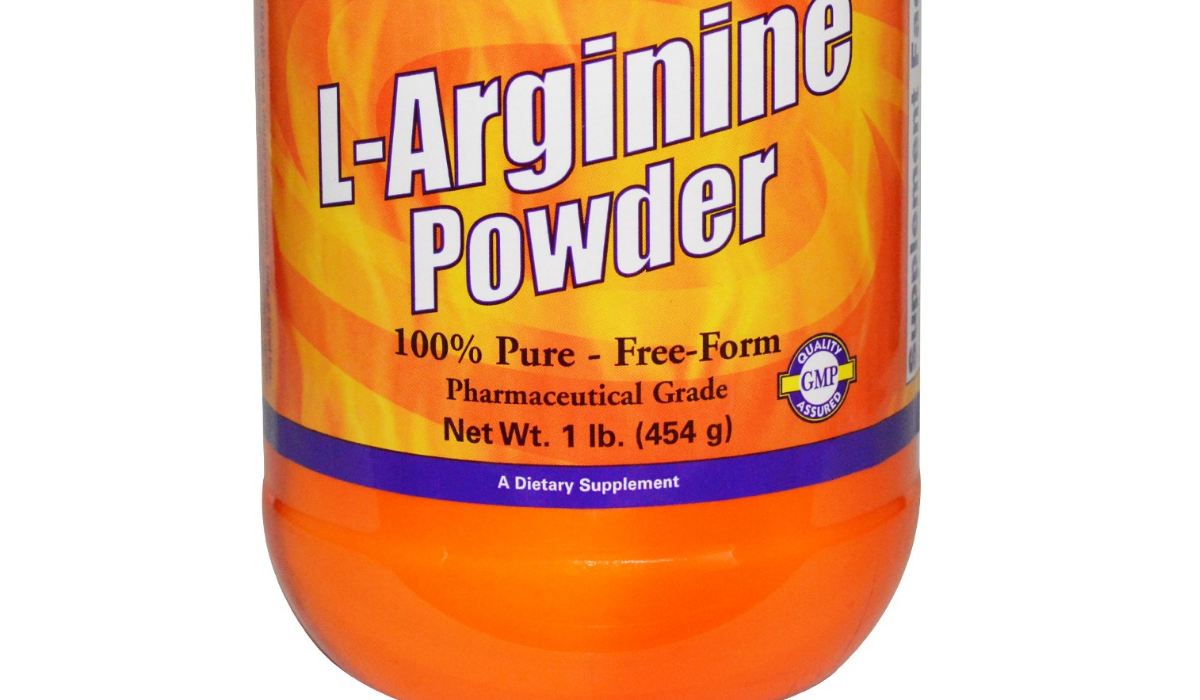
L-arginine is an amino acid and is considered to be one of the essential building blocks of protein. It is most commonly used by trainers and fitness experts as a dietary supplement in an attempt to induce training performance, particularly with regards to gaining higher energy and overcoming muscle fatigue.
The benefits of l-arginine largely relate to the increase in the concentration of nitric oxide, which is a compound developed by the endothelium of the blood vessels that is known for expanding blood vessels.
Additionally, l-arginine is also used for improving cardiovascular health by dilating clogged arteries and increasing proper blood flow to the body.
Other uses for l-arginine include treating wounds, improve liver function, and foster an efficient number of hormones in the body.
The following is a detailed guide to l-arginine and how you should use it for best results.
L-Arginine, or arginine, is developed naturally inside the human body.
As an amino acid, it becomes nitric oxide, which is then released into the bloodstream according to certain physiological changes, such as changes in blood pressure and cholesterol (1).
Arginine also signals your body to produce more protein, which has a considerable uses for gaining muscle and strength and for increasing sperm count.
However, arginine is not very beneficial for people suffering from heart conditions or pregnant women. In lieu of this, caution is advised.
More importantly, arginine also stimulates the growth of vital growth hormones along with glucose that enable you body to obtain the necessary nutrients for growth and higher energy.
This leads to a host of advantages that will be looked into greater detail.
Recommended dosage
Unless you are using a supplement, your body is generates a sufficient amount of l-arginine in the body.
You can increase the amount of l-arginine by eating foods such as eggs, dairy products, fish, and red meat.
However, if you intend of using supplements for training or some medical reason, you need to make sure you are within the 1200 mg per day limit.
For best results, consult a trained medical physician to weigh the risks and benefits associated with the supplement on your health.
Health benefits of l-arginine
There are various studies to show that l-arginine can help you gain muscle, boost male sexual health, and also improve cardiovascular health.
As for muscle growth, a 2009 study (2) shows that l-arginine can lead to muscle growth and fat loss. The study was experimented on 24 pigs over a 60 day period found tremendous results in overall weight loss and muscle development.
Another study conducted by Zajac et.al (3) found that increases in l-arginine leads to an increase in growth hormone levels.
This has important results for bodybuilders and trainers who train to burn fat and achieve large muscle size. The l-arginine can lead to better protein synthesis and fat metabolism.
In addition, the release of nitric oxide provides a host of advantages in reducing recovery times in between training days to help overcome DOMS (delayed onset muscle soreness) and acute muscle soreness.
What this means is that you’re fatigued and sore muscles will be able to recover a lot faster and maximize your workout performance.
Secondly, l-arginine is also found to have important applications for fostering healthy sexual lives for both men and women.
For men, it has the capacity to treat erectile dysfunction (4). Since it turns into nitric oxide, l-arginine can ensure healthy penile erection by expanding penis blood vessels and promoting proper blood flow. As a result, the penis can become stiff efficiently and remain erect for longer durations for engaging in sexual activities.
Increases in sperm count have also associated with a rise in l-arginine levels in the body. This offers a ray of hope to infertile men and gives them the opportunity to participate in healthy sexual activities.
Thirdly, l-arginine is also has been discovered to substantially improve cardiovascular health. By turning into nitric oxide, the amino acid eases clogged arteries and ensures health blood circulation.
This is also beneficial for alleviating chest pains and symptoms of coronary heart disease (5). However, the benefits of l-arginine on the heart are not conclusive; hence, it should be used on a case-by-case basis.
Side effects of l-arginine
Although there are clear benefits to the function of l-arginine, there are also certain side-effects that need to be considered prior to use. This is why it is crucial that you consult your medical physician.
Heart patients need to be especially cautious prior to using any l-arginine supplements. There is research to support l-arginine, in fact, can lead to poor heart health.
A John Hopkins study concluded the l-arginine neither improves vascular stiff nor does it increase ejection fraction (6). The study also led to the death of 6 patients of the l-arginine which led the study being cancelled at an early stage.
There are also minor side effects associated with l-arginine that can be experienced as a result of overdose. Some of these side effects are nausea, diarrhea, and weakness in the body.
This is why it is important that you pay close attention to the type of diet you are following. We have already mentioned how l-arginine is found in many food sources. A diet rich in such foods along with l-arginine supplements can heighten the risks of an overdose.
For muscle building, l-arginine can boost your physical endurance levels and minimize recovery periods during and between workout days. If you have a medical condition, such as erectile dysfunction, impotence, or a heart disease, l-arginine can help you alleviate its symptoms. However, you should never hasten to use it without consulting your medical physician.
Summary: L-arginine supplements can be used by adults, children, athletes, and overweight or obese people. However, since your body already produces enough l-arginine by consuming the right food sources, you do not necessarily are in need of supplements unless you have a medical problem or are looking to get in shape and build muscle.
http://bodynutrition.org/l-arginine/
 Image source: tbnlabs
Image source: tbnlabs Image Source: superfoodsrx
Image Source: superfoodsrx Image Source: truthinadvertising.org
Image Source: truthinadvertising.org Image source: nhgardensolutions.wordpress.com
Image source: nhgardensolutions.wordpress.com Image source: exploringpermaculture.blogspot.com
Image source: exploringpermaculture.blogspot.com Image Source: nordenergi
Image Source: nordenergi Image Source: backwaterbotanics.wordpress.com
Image Source: backwaterbotanics.wordpress.com Image Source: ironmusclesupplements
Image Source: ironmusclesupplements Image Source: purenootropics
Image Source: purenootropics Image source: dinitroshop
Image source: dinitroshop
 Image Source: eatandrelish
Image Source: eatandrelish